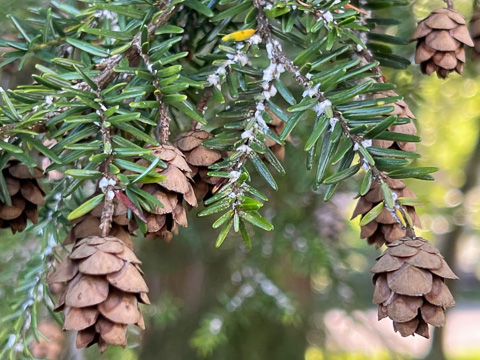Hemlock Trees
Hemlock Trees are considered the “redwood of the East” due to their ability to reach heights of over 170 ft. However, it is unlikely to see Hemlocks of this size today because many were chopped down. In colonial times the tree was highly valued for its bark, which was high in tannins and could be used to tan animal hides and produce leather.
These trees are able to grow in shady, moist environment which is why they are commonly found in the Riparian Zone (the area of vegetation on the side of a body of water). Their roots hold together soil preventing erosion and remove excess water from the ground.

Hemlock Wooly Adelgid
Hemlock trees are in trouble due to the invasive species, the Hemlock Wooly Adelgid. This small bug (less than 1.5 mm) resembles an aphid and attacks Hemlocks by sucking their sap, which kills their branches and needles. The adelgids leave behind a white, waxy substance on the bottom of the branch near the needles. If you see this or any other invasive species, be sure to report it to the DEC (see sidebar).